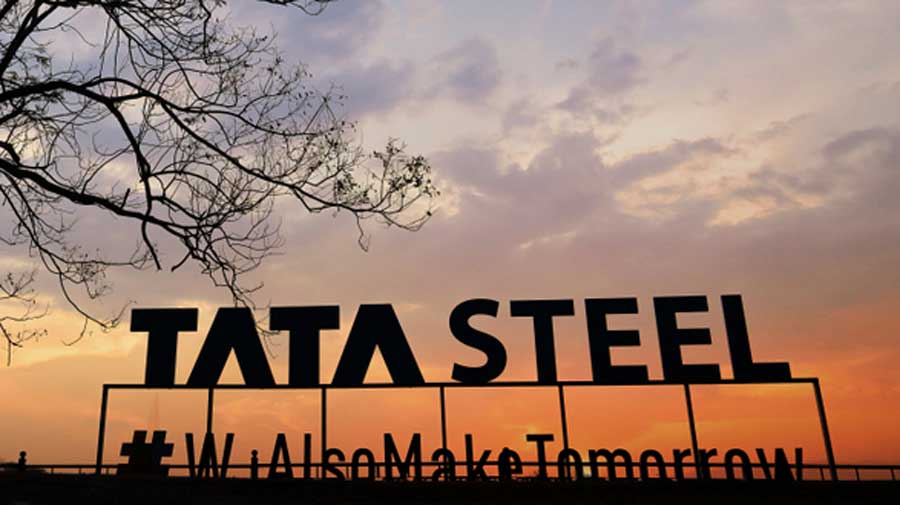Tata Steel will pursue different paths for the two European businesses in the Netherlands and the UK with a focus on making each of them self-sustaining and accountable individually, Koushik Chatterjee, executive director and chief financial officer of Tata Steel Limited, tells the author. Tata Steel would look at the Centre’s privatisation drive closely and take a call as and when it happens, he adds.
How do you analyse your latest quarter performance, including managing the debt ?
In the December quarter, Tata Steel delivered one of the best financial performances with the highest consolidated EBITDA of Rs 9,540 crore and free cash flows of over Rs 12,000 crore on the back of a strong operating performance of the India business, sharp focus on capital allocation and working capital management. All our operating hubs in India have performed exceptionally well with the stand alone EBIDTA margin at 37.5 per cent. Our key subsidiaries Tata Steel BSL and Tata Steel Long Products have also reported the highest profitability in recent years. Our debt management continues to be on target. After reducing net debt by Rs 8,285 crore in the first half, we continued to aggressively cut the net debt by Rs 10,325 crore and gross debt by Rs 5,640 crore during the quarter, taking the nine-month reduction in net debt by Rs 18,609 crore and gross debt by Rs 7,649 crore.
How do you see the way forward for the European business and how to make it sustainable ?
There are actions underway at multiple levels. First, the separation of the UK and the Netherlands business is giving us a good sense of the cost takeouts we are targeting to make it a more competitive cost structure. The organisation structure will also be simplified and de-layered which will help in driving higher site accountability. Second, we are working on the transformation of the businesses across many functions all of which is to make the the entity cash flow self sufficient. Finally, we will pursue different strategic paths for the two businesses in the future. For now we are focused on internal transformation actions and execute them well to make the businesses sustainable.
Tata Steel has been seeking financial assistance from the UK and the Netherlands government. But we have not seen much progress so far. Can you give us an update?
We have been in discussions with the UK government in exploring several options and what it means to the different stakeholders. In the Netherlands, our engagement with the government is on the long-term decarbonisation plan and how to ensure that there is a sustainable pathway for transition to the decarbonisation agenda set by the Dutch government. I think all stakeholders realise that we have to work together in this journey as it involves technology choices for the transition, especially on hydrogen. This is an ongoing dialogue and we have a decarbonisation plan to reduce CO2 in the Netherlands in the next decade.
Back home, the Centre has announced a massive disinvestment programme and companies such as SAIL, RINL would be on the block. Will Tata Steel bid for any of them?
For us, growth in India has always been a core strategy and we have grown both organically and in organically in the last decade. Once the assets or business fits our strategy and the risk and opportunities are identified, the decision to allocate capital for the acquisition becomes fundamentally clear. So, we will look at the assets that may be available but similar lens will apply. It’s too early to talk about anything specific on the subject now.
What is the update on the Kalinganagar expansion ? How much capex will be earmarked for the next fiscal?
A substantial part of the enabling work and engineering has been completed and we were pacing the execution in a phased manner with emphasis on two facilities — the pellet plant and the cold rolling mill. The disruptions due to the pandemic slowed down the project and we had also reduced our capital allocation for the project during the first three quarters of the current fiscal. We are now restarting the project and the capex allocation for 2021-22 will be much higher than 2020-21. The 6-million-tonne per annum pellet plant and the cold rolling mill will get completed in about 12-15 months.
Will additional debt be required for the capex? Where will the net debt number be at the end of March 31?
The future debt levels will primarily depend on the financial framework we have in place. The capital allocation priority is clear — we will continue to de-leverage, allocate capital to complete our planned projects and keep the appetite in the balance sheet for future growth. We will continue to reduce the gross debt in the fourth quarter by more than Rs 12,000 crore and we are on target.











